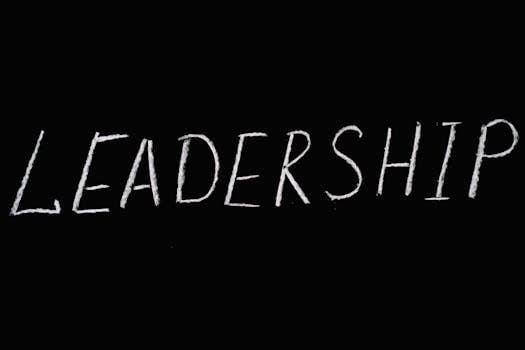Overview of Histotechnology⁚ A Self-Instructional Text
Histotechnology⁚ A Self-Instructional Text serves as an indispensable resource for students, practicing technicians, technologists, residents, and pathologists alike. It has been thoroughly revised and expanded to include the latest advancements.

Key Editions and Authors
The book’s success is largely attributed to Freida L. Carson and Christa Hladik Cappellano. Their expertise has shaped multiple editions, consistently updating content to reflect changes in histotechnology practices and knowledge.
Freida L. Carson’s Contributions
Freida L. Carson, a prominent figure in histotechnology, has been instrumental in developing Histotechnology⁚ A Self-Instructional Text into a leading resource. As the primary author, Carson’s expertise and dedication are evident throughout the various editions. Her comprehensive knowledge of histological techniques, staining procedures, and laboratory practices forms the foundation of the book’s content.
Carson’s ability to present complex information in an accessible and self-instructional manner has made the book a valuable tool for both students and practicing professionals. Her commitment to accuracy and clarity ensures that readers receive a thorough and up-to-date understanding of the field. Through her work, Carson has significantly contributed to histotechnology education.
Christa Hladik Cappellano’s Role
Christa Hladik Cappellano has played a significant role in the development and refinement of Histotechnology⁚ A Self-Instructional Text. As a co-author, Cappellano has collaborated with Freida L. Carson to ensure that the book remains current and relevant to the evolving needs of histotechnology professionals. Her contributions have enhanced the book’s scope and depth, making it an even more valuable resource.
Cappellano’s expertise in histotechnology practices, particularly in areas such as laboratory informatics and quality control, has been instrumental in expanding the book’s coverage. Her involvement ensures that the book addresses the latest advancements and challenges in the field, providing readers with practical insights and guidance. Her collaborative efforts have greatly strengthened the book.

Content and Scope
This text comprehensively covers histological techniques, staining principles, immunohistochemistry, molecular techniques, and laboratory informatics. It is designed as a learning tool for histotechnology students and practicing professionals in the field.
Fundamentals of Histological Techniques
The foundation of histotechnology lies in the meticulous preparation of tissue specimens for microscopic examination. This section delves into the essential techniques, encompassing fixation to preserve cellular structures, processing to embed tissues in a solid medium like paraffin, and microtomy to obtain thin sections. Proper handling of specimens, instrumentation used in the lab, and laboratory safety protocols are emphasized.
Understanding laboratory mathematics, solution preparation, and the principles behind various fixation methods is crucial. This section also covers the theory and application of different types of tissue processing, including paraffin embedding, cryotomy, and plastic embedding. Quality control measures for each stage are also discussed.
These are the core skills for producing high-quality slides.
Staining Procedures and Principles
This section explores the theory and practice of staining techniques, essential for visualizing cellular components under a microscope. It starts with basic nuclear and cytoplasmic staining, including the widely used hematoxylin and eosin (H&E) stain, providing a foundation for understanding cellular morphology. Special stains for carbohydrates, connective tissues, and microorganisms are explained in detail.
The chemical reactions, dye properties, and factors affecting staining quality are discussed. Trouble shooting staining artifacts, and optimizing protocols for consistent results are addressed. Also, the section covers the principles behind differential staining and the significance of each stain’s application in diagnostic histopathology.
Emphasis is placed on understanding the mechanisms of dye binding.
Immunohistochemistry and Molecular Techniques
This section delves into the applications of immunohistochemistry (IHC) and molecular techniques in histopathology. IHC utilizes antibodies to detect specific proteins in tissue sections, aiding in tumor classification and diagnosis. Principles of antibody-antigen binding, antibody selection, and optimization of IHC protocols are discussed.
Molecular techniques, such as PCR and FISH, are also explored for their role in identifying genetic alterations and infectious agents; Sample preparation, probe design, and data interpretation for these assays are explained. Integrating IHC and molecular findings for comprehensive diagnostic assessments is emphasized.
The section offers practical guidance on performing and interpreting these techniques, emphasizing their increasing importance in modern diagnostic pathology. Furthermore, it covers quality control.
Laboratory Informatics
This section introduces the critical role of laboratory informatics in modern histopathology laboratories. It covers the principles and applications of Laboratory Information Systems (LIS) in managing and tracking specimens throughout the entire workflow, from accessioning to sign-out. Data management, quality control, and regulatory compliance within an informatics framework are highlighted;
The benefits of digital pathology, including image analysis, telepathology, and data integration, are explored. Considerations for implementing and maintaining an effective LIS, including data security, interoperability, and user training, are discussed.
This section equips readers with the knowledge to leverage informatics for improved efficiency, accuracy, and patient safety in the histopathology laboratory, as the current texts for the histotechnology laboratory dont touch upon informatics.

Use as a Learning Tool
This text is designed as a learning tool for histotechnology students, offering self-instructional content. Practicing technicians, technologists, residents, and pathologists will also find it immensely valuable for understanding the concepts.
Target Audience⁚ Students and Professionals
Histotechnology⁚ A Self-Instructional Text caters to a diverse audience, primarily serving as a learning tool for histotechnology students. The text is also useful for practicing technicians and technologists seeking to refresh or expand their knowledge base. Residents in pathology programs can benefit from the comprehensive coverage of histological techniques and principles.
Pathologists, too, will find value in this resource, as it offers a detailed review of histotechnology practices, ensuring a strong foundation in diagnostic procedures. The self-instructional format makes it ideal for both structured learning and independent study. It’s an indispensable guide for anyone involved in histopathology. The book can be used to study for the HTL certifying examination. The book covers laboratory safety issues and cytopreparation.
Self-Assessment Workbook Companion
The Histotechnology⁚ A Self-Assessment Workbook serves as an updated and expanded companion to Histotechnology⁚ A Self-Instructional Text. This workbook is an ideal tool for reinforcing learning and assessing comprehension of key concepts presented in the main text. Featuring over 1,100 questions, the workbook challenges users to test their understanding of histotechnology principles, techniques, and procedures.
The questions cover a broad range of topics, ensuring a comprehensive evaluation of knowledge. It is designed to enhance the learning experience, enabling students and professionals to identify areas of strength and weakness. Regular use of the workbook can significantly improve retention and application of histotechnology concepts. It will also help you study for the HTL certifying examination. The workbook is an effective method for exam preparation.

Relevance to Certification
Histotechnology⁚ A Self-Instructional Text is an indispensable tool for histotechnologists preparing for the ASCP HTL certifying examination. It provides comprehensive coverage of essential topics and updated content for exam success.
Preparation for ASCP HTL Examination
Histotechnology⁚ A Self-Instructional Text plays a crucial role in preparing candidates for the American Society for Clinical Pathology (ASCP) Histotechnologist (HTL) certification examination. It is an indispensable teaching tool and reference guide, covering a wide range of topics relevant to the exam. The text’s comprehensive content, updated with new information on immunohistochemistry, molecular techniques, and cytopreparation, ensures that candidates are well-versed in the latest advancements in histotechnology.
The book’s self-instructional format allows candidates to learn at their own pace and focus on areas where they need the most improvement. The inclusion of nearly 1,200 questions, along with the companion self-assessment workbook, provides ample opportunities for practice and self-evaluation. By mastering the concepts presented in this text, histotechnologists can confidently approach the ASCP HTL examination and achieve their certification goals, enhancing their professional credibility and career prospects.




